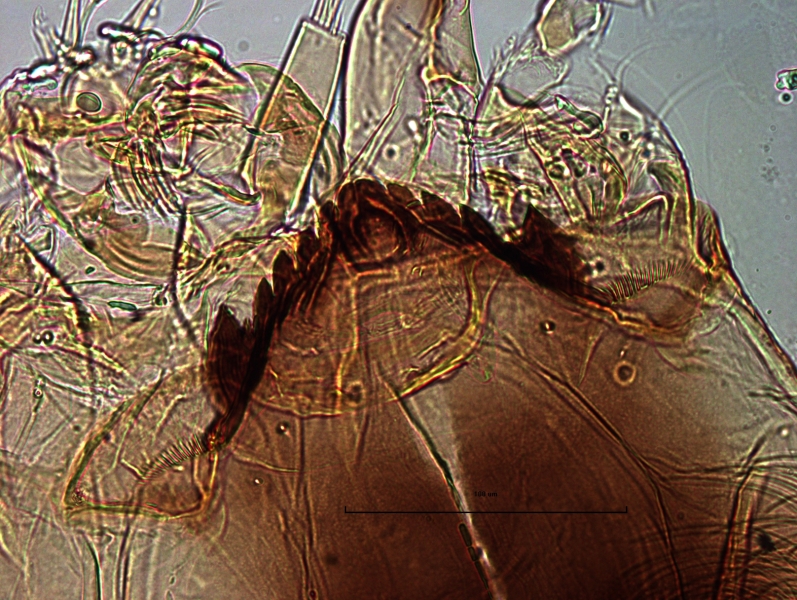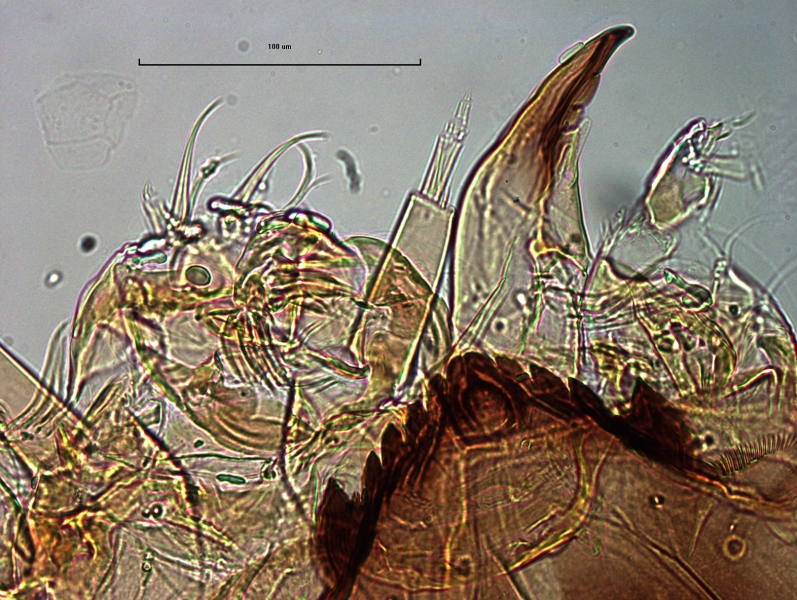Cladopelma sp.
Taxa description
Cladopelma is a genus of freshwater chironomids belonging to the Chironominae subfamily. Cladopelma sp. are typically found in or around the bottom sediment and can tolerate a wide range of ecological habitats ranging from streams to large rivers and lakes, brackish water, and hot springs. Cladopelma sp. is also tolerant to pollution and low oxygenated conditions. This genus can be distinguished by its uniquely shaped arched mentum with enlarged outer lateral teeth. The median tooth is slightly medially notched and does not project too far past the lateral teeth. The mental and mandibular teeth are quite dark. This genus has well developed triangular shaped, ventromental plates with a lobe, showing strong, short striae on the middle third of the plate. The mandibular teeth are flattened, with 1-2 inner teeth, without dorsal teeth and pecten mandibularis. Cladopelma sp. has 5-segmented antennae, where the basal segment is longer than the length of segments 2 through 5 combined. The ring organ is found on the basal fourth of antennal segment 1. The premandible is apically bifid with a brush. The pecten epipharyngis is a simple plate, and the SI are simple and blade-like.
Lake occurrence
This genus occurs in all five Great Lakes.
Relative size
Does it have a barcode reference from the Great Lakes?
Yes, this genus does have a barcode reference from the Great Lakes.
References
Andersen, T., Cranston, P.S., Epler, J.H., 2013. The larvae of the Chironomidae (Diptera) of the Holarctic Region. Insect Systematics & Evolution, Supplement No 66.
NOAA and USEPA. 2019 Great Lakes Waterlife. Accessed on 08/25/2023.
Epler, J.H., 2001. Identification manual for the larval Chironomidae (Diptera) of North and South Carolina.
Nalepa, T. F., Fanslow, D. L., Lansing, M. B., Lang, G. 2002. Abundance, biomass, and species composition of benthic macroinvertebrate populations in Saginaw Bay, Lake Huron, 1987-96. Great Lakes Environmental Research Lab, Ann Arbor, MI, tech memo. GLERL-122.



